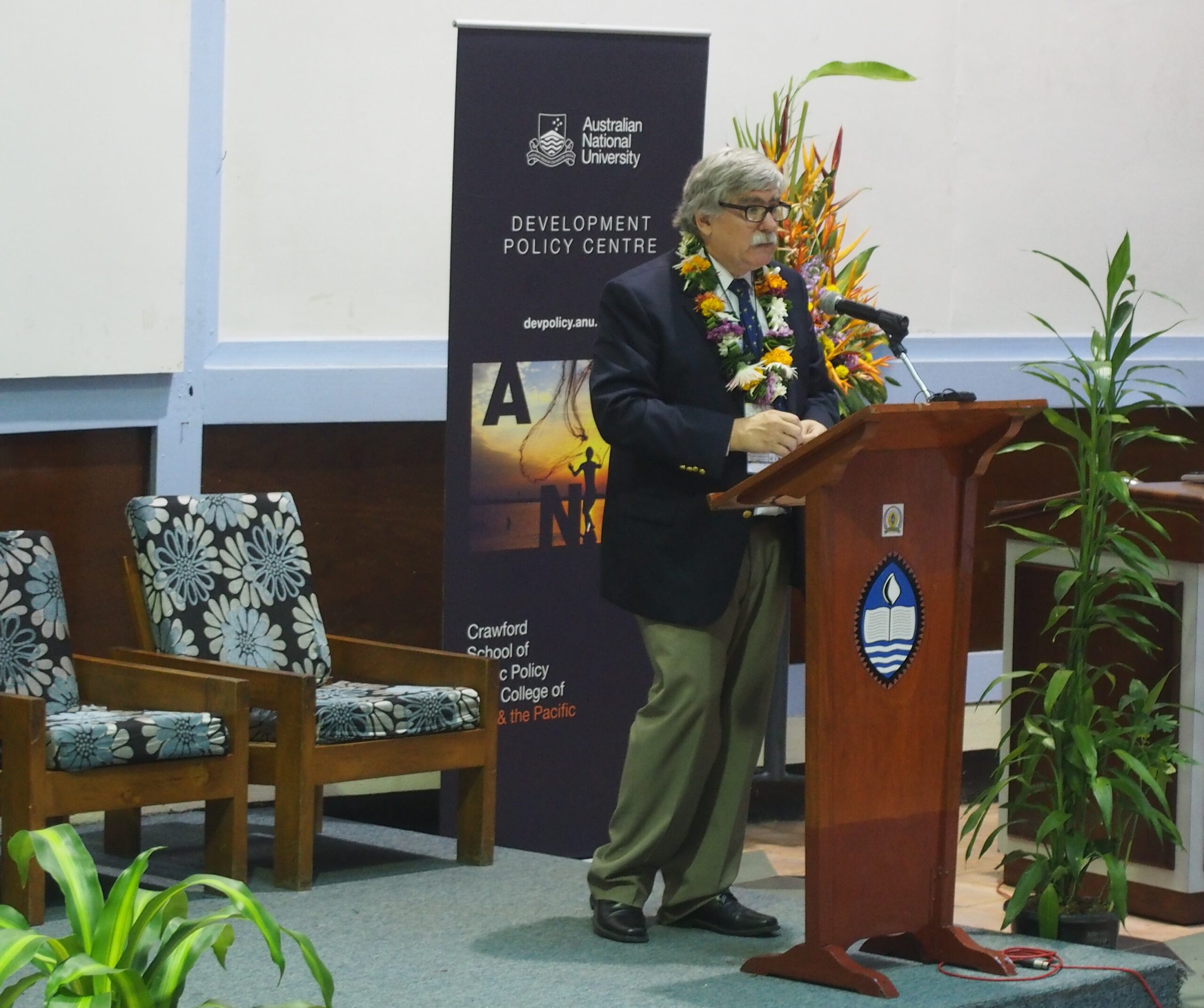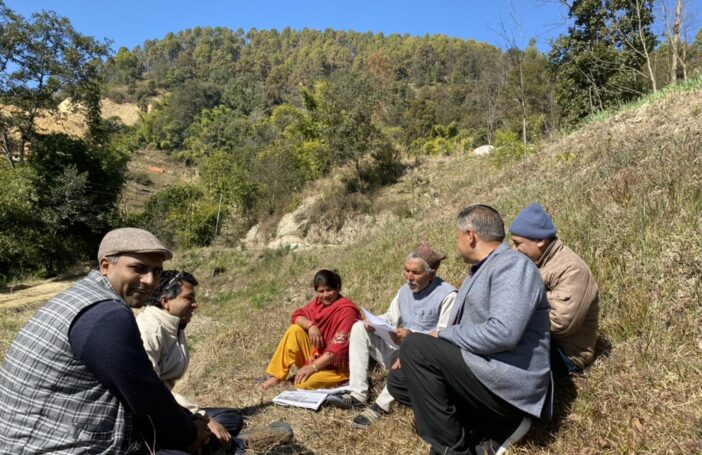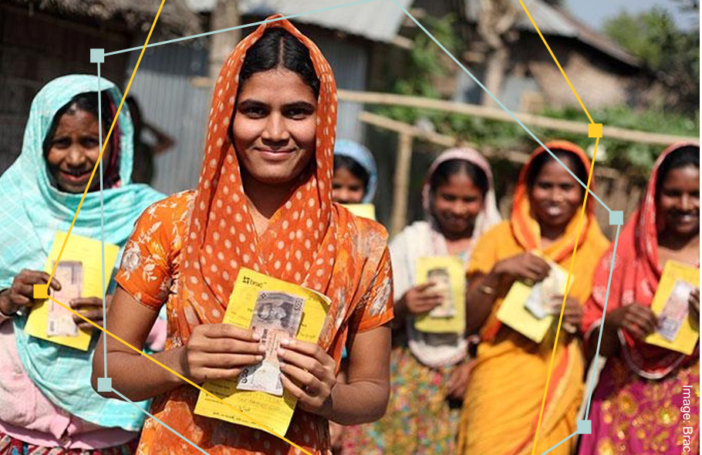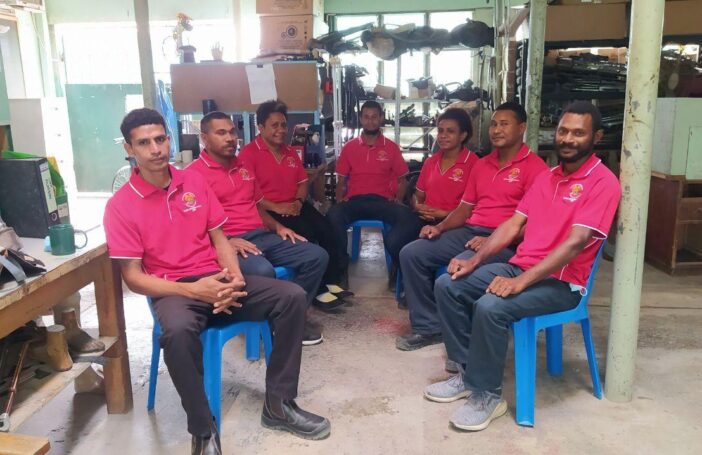Capacity building is a long-standing aspect of development efforts that I think we can agree has not been an area of broad success. After 50 years of development support, while there are examples of dramatic improvements in institutional performance, the broad problems of weak institutions – ministries and parastatals that are not effective users of development support – is a constant refrain of project documents. Specifically, across the work I have participated in within the education and health sectors in three World Bank regions (Africa, Latin America and East Asia), I found the pattern of weaknesses in those key ministries has been remarkably consistent. I would underline that these ministries are both substantial users of budget resources as well as donor support; indeed in many countries the education budget is the largest single line item in the overall budget.
In addition, donor efforts at broader civil service reform have not fared well. When one reviews World Bank performance in supporting self-standing public sector reform projects, the results are not encouraging. Indeed, the low success rate of Bank projects in this area has discouraged future work. More broadly, I find it interesting, and a bit sad, that the challenge of capacity building seems to have disappeared in the reorganised World Bank – it appears nowhere in the 14 new global practices.
Further, the long-standing but more narrow investment of the World Bank (and other donors) in technical assistance (TA) is often an area of frustration and criticism for recipients and donors alike. Governments often feel that TA is imposed on them by donors and that local capacity is not fully respected. They worry about the costs of foreign advisors and resent the fact that the administration of TA is typically overseen by the donor rather than by the recipient. At the same time, donors often find finalising TA contracts difficult and time-consuming, and worry that the lack of technical capacity will undermine the substantial investment of resources they are committing.
This situation is particularly challenging given the key role institutions generally, and technical capacity particularly, play in ensuring sustained development impact. Indeed, when I was questioned in the Bank during my tenure as Regional Vice President of East Asia and the Pacific on what the key differences are between the successful economies in East Asia and the more challenging record in Africa, I increasingly focused on institutional capacity and the key role it plays in development performance. In particular, I would often note that while the senior technocrats and parastatal managers in East Asia and Africa typically are similarly well-qualified, in East Asia these officials were much better supported by qualified staff in lower level positions in the bureaucracy; positions that were often vacant or filled by unqualified staff in Africa.
A major rethink of how to approach capacity building would be timely and appropriate; but this hasn’t happened. When I consider why, I don’t have a definitive answer, but I do have some tentative ideas.
The real issue is that institutional development is risky and difficult. First, institutional change takes time. The typical five year length of donor investment projects may make sense for infrastructure investments, but it seems very short for institutional development.
Second, sustained efforts at institutional building will have real costs for the government. Ensuring more competitive salaries and funding for training will require long-term government support.
Third, continuity of leadership and a clear strategy for institutional improvement are necessary conditions that seldom exist. Numerous donor behaviours (which I will elaborate on in the next post in this series) do not help the cause.
Finally, bad institutions seldom reform on their own, and a broad absence of outside pressure from recipient governments and the donors to reform allows the momentum of failure to prevail.
What I propose to do is make a number of specific suggestions on how to increase the probability of success in this area. These will follow in the next instalment in this series.
Jim Adams is a former World Bank Vice President for East Asia and the Pacific. This post is the first in a series based on his keynote address delivered at the 2015 PNG Update at the University of Papua New Guinea on 18 June 2015. The full speech can be found here [pdf], and you can listen to the podcast here. Other posts in this series can be found here.






I have reviewed the blog comments on my presentation on capacity building and have a range of reactions and further comments. First, the general support from Rod Reeve and Max Walsh is clearly appreciated. Second, I fully support Luc Lapointe’s point on the potential importance of engaging the private sector in capacity building. His emphasis on ensuring that we measure results consistently is also sensible. Third, Deborah Rhodes cites some recent work on the area, including work she has completed on the Pacific. Her point on the need to take in to account cultural values is one I have considerable sympathy with. I also make a range of critical points on present donor performance. Specifically, I fully agree that there has been too much innovation driven by donors without proper analysis of the likely local response. Having said this, I don’t agree with her suggestion that my analysis is based on a foundation of “western values”. No where do I suggest “individualist values” should drive capacity development and I certainly wouldn’t argue that action plans which divide communities are sensible. At the same time I am not reluctant to argue for policy changes and program changes when existing institutions are not delivering adequate services. I would support this by noting that, in my experience, parents in both Africa and the Pacific recognize all to well the failures of the education and health systems they presently live with and will actively support efforts that they believe can lead to meaningful improvements.
Fourth, Phil Dowton expresses a number of important frustrations with discussion of capacity building which I think deserve comment. First, while I agree with his point that capacity is not a panacea, I do see capacity as a necessary condition for broad improvements in government performance, The simple fact is that countries that have improved their policy and operational performance in key areas have shown remarkable improvements in poverty reduction and service delivery. Second, while I fully agree with his point that governance is also key, I don’t know any cases where governance has improved in the absence of improvements in capacity. Finally, I fully agree with his message that capacity building cannot be an end in itself. Fifth, my response to Elie Shumbusho’s request for success stories in Africa is regretfully modest. I don’t think any African country has had broad success across sectors in institution building. In my speech I noted the general progress made across the continent in strengthening central banks; I am also a big fan of the improvements in economic policy that have been supported by the African Economic Research Consortium. One can also note specific cases of infrastructure improvements – the energy sector in Kenya and the urban water sector in Uganda are cases that come to mind, However, and most disappointing to me, I can’t really cite an example of best practice in either education and health.
Very interesting blog and responses from Deborah and Elizabeth. As someone who works in the capacity development field in Rwanda, I would be interested to read from Jim if there is any country, somewhere on the entire African continent, that could be described as, somehow, a good example when it comes to Institutional Capacity Development.
I don’t disagree with much of what has been said so far – but most of it has been said before – and I agree strongly with comments on the neglect of social, cultural and anthropological aspects, but I think Elie raises the critical point. Does it work? The fact that we’re still having the debate is testimony to the fact that it doesn’t, bearing in mind that capacity building in various guises has been around for at least 30 years.
‘Capacity analyses, diagnoses and responses’ have dominated development thinking, ‘capacity building’ has been seen as a panacea, and in the process it has smothered alternative perspectives. I’m not sure why. As a broad generalization, if we asked whether country X or sector Y requires more capacity we’d probably acknowledge that it has some but ‘yes’ it needs more. If we asked the same with respect to ‘better governance’, in most cases we’d say ‘definitely’. This not only raises questions about whether X or Y need ‘more capacity’, ‘better governance’ or both, but whether it is possible to ‘build capacity’ in the absence of ‘good governance’ – and whether successful capacity building will produce better health outcomes etc. without better governance.
It is nonsensical to argue that the provision of more capacity will improve service delivery etc. when through poor governance neither donors nor recipients make the best use of, misdirect and/or waste, the capacity that is already available. There are many situations where ‘capacity gaps’ need to be addressed, but equally, many where better governance would lead to a better use of existing capacity and better outcomes.
I am also concerned about counterproductive aspects of the capacity narrative i.e., its starting premise of a ‘glass half-empty, not half full’, and emphasis on the ‘can’t do’ rather than ‘can do’ and the dismissal of ‘will do’ and ‘won’t do’. As a consequence, capacity building is often undertaken for its own sake and as an end in itself rather than as a means to an end.
At the end of the day, I would like to see more focus on ‘people’ and ‘beneficiaries’ – in health, for example, what communities and patients want and need – and approaches that are grounded in the ‘actualities’ of development rather than the ‘institutional realities’ of institutions, structures and systems.
There has been plenty of work done on capacity development approaches which has delved into these issues more deeply (e.g. the major research undertaken by the European Centre for Development Policy Management, reported in Capacity, Change and Performance, by Heather Baser and Peter Morgan 2008). My work in this area (Capacity Across Cultures: Global Lessons from Pacific Experiences, 2014) suggests that if you look in Pacific countries for the institutional capacity that we value in western countries, you won’t find much evidence of it, because that kind of capacity is not what is generally valued in those national cultural contexts. That is how you end up with a judgement about ‘weak capacity’ which I believe to be fundamentally flawed.
But if you looked for the kinds of capacity that are valued in those cultures, then you would find there is enormous capacity (it’s just that it’s the kind of capacity that donors don’t value as much). For example, in cultures where benevolent and autocratic leaders are valued, then it doesn’t make sense to have flat-structured public sector institutions for example – they won’t work effectively. In cultures where collectivist values underpin decision-making, then it doesn’t make sense to build performance systems built on individualist values. In cultures which value the maintenance of harmonious relationships over the delivery of tasks for the sake of ticking boxes, then it doesn’t make sense to think that action plans can drive an institution at the cost of harmony between people. And in cultures where uncertainty and ambiguity are seen as threats to well-being, then it doesn’t make sense to introduce high levels of rapid innovation and expect them to stick.
So from my perspective, having worked on these issues in the Pacific for 30 years too, it’s the frame of reference of donor agencies and aid programs that is the biggest challenge, not Pacific capacity. My book includes case studies of Pacific Islanders who have thoughtfully reflected on their involvement in capacity development processes. It also includes some approaches for how aid programs can do things differently, if there is a genuine interest in contributing to Pacific capacity for developmental outcomes.
Very thoughtful response Deborah and thank you for bringing into this public discussion the cultural dimensions of development interventions which are primarily shaped and applied by donors and practitioners from Western democracies and societies. We forget our own development processes. Whilst I found Jim’s speech interesting, and applaud his acknowledgement about how important long term approaches to capacity building are, I also found it troubling that the cultural and anthropological aspects were again missing. I think you have summarised them very clearly. Building trust and learning about the cultural dimensions in capacity building efforts takes time and courage on the part of donors and practitioners. You run the risk of severe criticism if your raise cultural relevance as a practitioner (or as an informed donor representative). In a climate of quick wins, donor driven interventions, and moral outrage about corruption, cultural competence is no longer an open conversation. Australia has not come to terms with the significance of collectivist societies and communities in its own work and responses in Indigenous communities. What this means for leaders, communities, individuals and organisations is rarely discussed in the development policy space. We construct problems around collectivist societies and do more harm in the process. The ramifications of this deep cultural knowledge and understanding (and respect), for development models and practice are immense. Heather’s and Peter’s work from the ECDPM remains some of the most well informed research on capacity building around and your own writing is also very important. Heather’s work was heavily informed by her deep engagement with PNG and other partner country PS leaders. Success is not ours alone to judge and I agree such assessments are flawed.
Dear Jim,
Very interesting blog and something we are definitely working on in the context of developing countries. Outside of capacity building for government officials, we are looking at the role of the private sector to also engage their employees in capacity building and technical assistance initiatives.
The problem is not so much…the opportunity that is in front of us but the system that is needed to allow for smooth, efficient, and effective capacity building programs to take place (with measurable outcomes).
Not sure if you are following the FfD3 event but in the draft final report “capacity” and capacity building is mentioned 40 times. Technical Assistance is mentioned six times – knowledge (sharing) is mentioned 14 times.
Now….it’s how do you turn this into opportunity and measurable (successful) efforts.
Saludos cordiales,
I agree Max – this should be essential reading/podcast listening for policy makers and anyone designing interventions.
How refreshing to hear such confronting statements from a person who understands the problems of capacity building. I enjoyed Jim Adams’ full address very much.